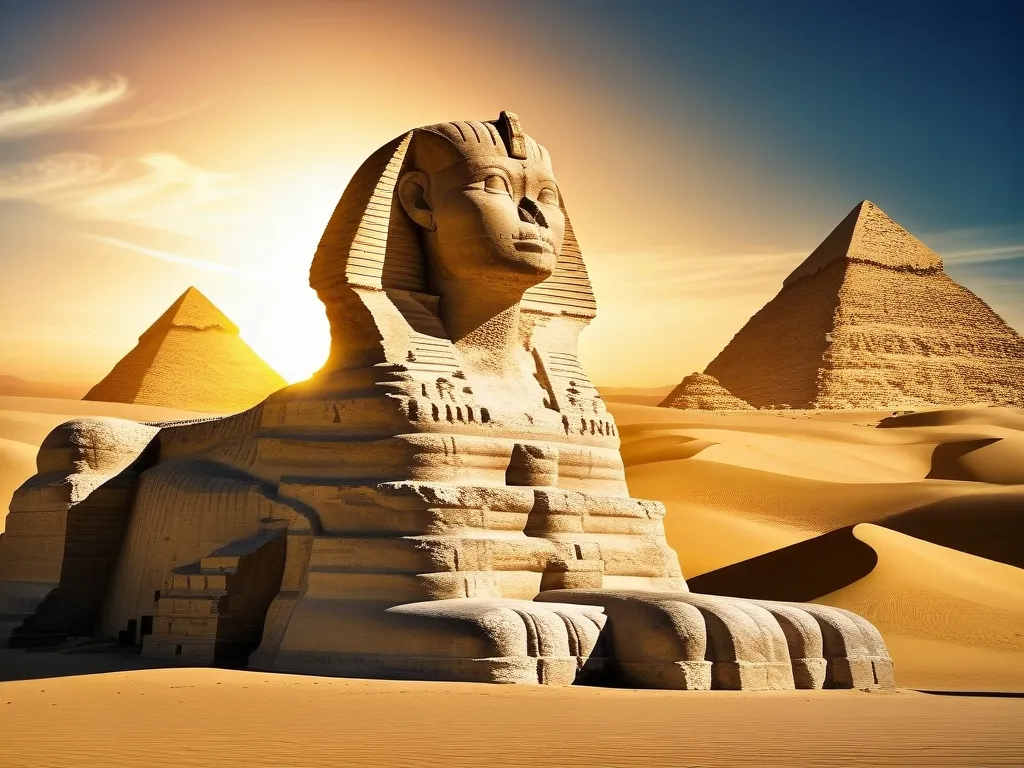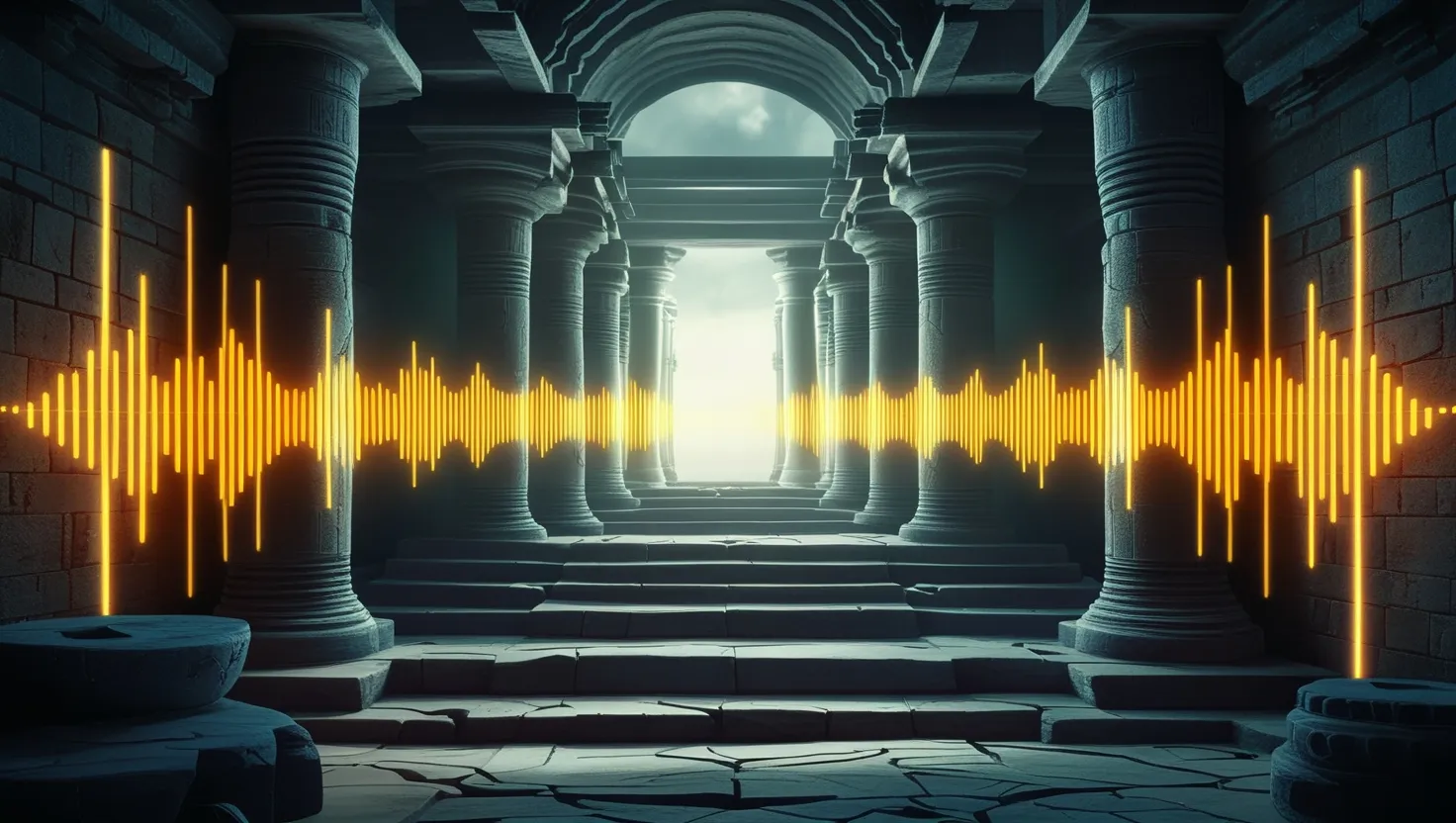The Great Sphinx of Giza: A Colossal Mystery Beneath the Sands
Standing before the Great Sphinx of Giza, you can’t help but feel a sense of awe and wonder. This ancient giant, with its lion’s body and human head, has captivated the imagination of people for thousands of years. It’s not just its immense size that’s impressive - at 66 feet high and 240 feet long, it’s one of the largest monolithic statues in the world. What really grabs you is the air of mystery that surrounds it.
You see, the Sphinx isn’t just a statue. It’s a riddle wrapped in limestone, a puzzle that’s been teasing archaeologists and history buffs for centuries. And the biggest question of all? What lies beneath those massive paws?
The idea that there might be another monument or even a hidden world buried under the Giza plateau is enough to make your imagination run wild. It’s like something out of an adventure movie, right? But here’s the thing - it might not be as far-fetched as it sounds.
Recent digs have turned up some pretty interesting stuff. They’ve found a keyhole shaft under the Sphinx, which has got people thinking it could lead to an unfinished tomb or secret chambers. And it’s not just that - there are other tunnels and openings scattered around the monument. It’s starting to look like the Sphinx might be part of something much bigger and more complex than we ever thought.
Some folks reckon these tunnels could be part of a huge network of underground passages. Imagine that - a whole hidden world right under our feet, possibly connecting the Sphinx to other monuments on the Giza plateau. It’s like an ancient Egyptian subway system, only way cooler and probably full of mummies.
Speaking of ancient Egyptians, let’s talk about when this big cat-human hybrid was built. Most experts agree it was during the reign of Pharaoh Khafre, around 2558-2532 BC. But here’s where it gets tricky - no one really knows why it was built. Was it supposed to guard the tombs and temples? Or did it have some deeper, more mysterious purpose?
The face of the Sphinx is another head-scratcher. It looks a lot like Khafre, which makes sense if he ordered it built. But some people think it might represent an Egyptian god or goddess, like Horus or Ra. It’s like trying to figure out who a statue is supposed to be, only the statue is the size of a small apartment building and several thousand years old.
Now, let’s talk about something that doesn’t get as much attention - the Sphinx Temple. This massive ancient structure sits right in front of the Sphinx, and it’s been off-limits to the public for decades. Recent excavations have found some pretty cool stuff here, including evidence of advanced technology in stone and signs of infrastructure that could lead to unexplored shafts and chambers beneath the Giza plateau.
The temple’s construction is similar to the pyramids, which suggests it was built around the same time by the same people. But here’s the weird part - it got buried in sand and sediment really early on, even by ancient Egyptian standards. It wasn’t until the 1930s that it was fully dug up by an Egyptian archaeologist named Selim Hassan.
Unfortunately, over the years, a lot of the temple’s walls and foundation tiles have been plundered. It’s like trying to solve a jigsaw puzzle when half the pieces are missing. But what’s left is still pretty impressive and adds another layer to the mystery of the Sphinx.
One of the most popular theories about the Sphinx is that there’s a hidden library or chamber filled with ancient knowledge buried underneath it. While there’s no solid proof of this, it’s a fun idea to think about. Some people even believe the Sphinx was built on top of an existing tomb, which could be full of artifacts and mummies from ancient Egypt.
Recent findings have given this theory a bit more weight. There’s evidence suggesting that the Sphinx was actually built on top of an older structure. It’s like finding out your house was built on top of an ancient castle - pretty cool, but also kind of mind-blowing.
Despite being thousands of years old and exposed to some pretty harsh weather, the Sphinx is still standing. But that doesn’t mean it’s not fragile. Conservation efforts are ongoing to protect this ancient wonder from erosion and other environmental threats. The missing nose of the Sphinx (which, contrary to popular belief, wasn’t shot off by Napoleon’s troops) is a constant reminder of how vulnerable this monument really is.
Visiting the Sphinx today is an experience like no other. Even if you’re not superstitious, there’s something almost spiritual about standing in front of this ancient giant. Many people believe the Sphinx has mystical powers, like protecting against bad luck or bringing good fortune. Whether or not you buy into that, standing between its massive paws (each twice as tall as a person and longer than a city bus) is guaranteed to make you feel pretty small and maybe a little bit in awe of the ancient world.
As archaeologists continue to study the Sphinx, they seem to find more questions than answers. They’ve discovered fossil fingerprints in the limestone blocks used to build both the Sphinx and its temple, which suggests there was a single master plan linking the Sphinx to Khafre’s pyramid and temples. But then there are signs that the Sphinx was never finished - abandoned stone blocks, even remnants of an ancient workman’s lunch and toolkit. It’s like the ancient Egyptians just up and left one day, leaving their greatest project unfinished.
The mysteries of the Sphinx go beyond just its construction and purpose. The very landscape it sits on holds clues to its past. The Giza plateau, with its iconic pyramids and the Sphinx, was once a very different place. Geological evidence suggests that this area was once much wetter, possibly even forested. Imagine the Sphinx looking out over green fields and flowing rivers instead of endless desert. This change in climate could hold clues to the age and purpose of the Sphinx, as well as the civilizations that built it.
One of the most controversial theories about the Sphinx is that it’s much older than commonly believed. Some researchers argue that the weathering patterns on the Sphinx and the enclosure around it suggest exposure to heavy rainfall. The catch? The last time Egypt saw that kind of rainfall was thousands of years before the commonly accepted date of the Sphinx’s construction. If true, this would completely rewrite our understanding of ancient Egyptian civilization and possibly human history as a whole.
The alignment of the Sphinx with celestial bodies has also been a subject of intense study and speculation. Some researchers believe that the Sphinx, along with the pyramids, forms a sort of star map on the ground, mirroring important constellations. This idea, known as the Orion Correlation Theory, suggests that the ancient Egyptians had a much more advanced understanding of astronomy than we previously thought.
The technology used to build the Sphinx is another source of wonder and debate. How did the ancient Egyptians manage to carve such a massive statue out of solid bedrock with the tools available to them at the time? Some researchers argue that the precision and scale of the Sphinx suggest the use of advanced technologies that we don’t typically associate with ancient civilizations. This has led to some pretty wild theories, including the involvement of extraterrestrial beings or lost advanced civilizations.
The Sphinx’s gaze, eternally fixed on the eastern horizon, has led to speculation about its role as a marker of the equinoxes. Twice a year, during the spring and autumn equinoxes, the sun rises directly between the paws of the Sphinx when viewed from a certain angle. Was this intentional? Did the ancient Egyptians use the Sphinx as a sort of celestial clock or calendar? These questions add yet another layer to the mystery of this ancient monument.
The Great Sphinx of Giza isn’t just a testament to ancient Egypt’s rich cultural heritage - it’s a reminder that our world is full of mysteries waiting to be uncovered. Whether or not there’s another monument hidden beneath the sands, the Sphinx itself is proof that there’s always more to discover, even in places we think we know well.
As you walk away from this ancient giant, you’re likely to find yourself with more questions than answers. But that’s the beauty of it, isn’t it? The Sphinx has stood for thousands of years, weathering storms both literal and metaphorical, and it still has secrets to share. It’s a bridge between our world and the ancient past, a silent storyteller that continues to captivate and inspire.
In the end, perhaps the greatest allure of the Sphinx lies not in the answers it might provide, but in the questions it continues to raise. It challenges us to look beyond the obvious, to dig deeper (sometimes literally), and to never stop wondering about the world around us. The Sphinx reminds us that history isn’t just a dry list of dates and facts - it’s a living, breathing mystery that we’re all invited to explore.
So the next time you see a picture of the Sphinx, or if you’re lucky enough to visit it in person, take a moment to really look at it. Let your imagination wander. What secrets might it be hiding? What stories could it tell if it could speak? And most importantly, what mysteries are still out there, waiting for us to uncover them? The Sphinx may be silent, but its message is clear: the world is full of wonders, and the greatest adventures often begin with a simple question.






